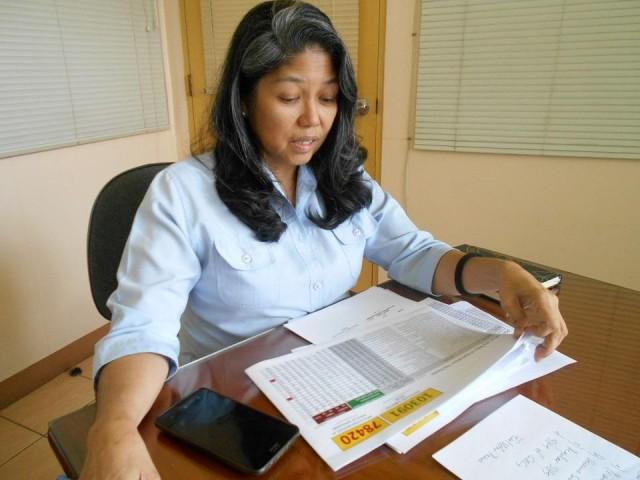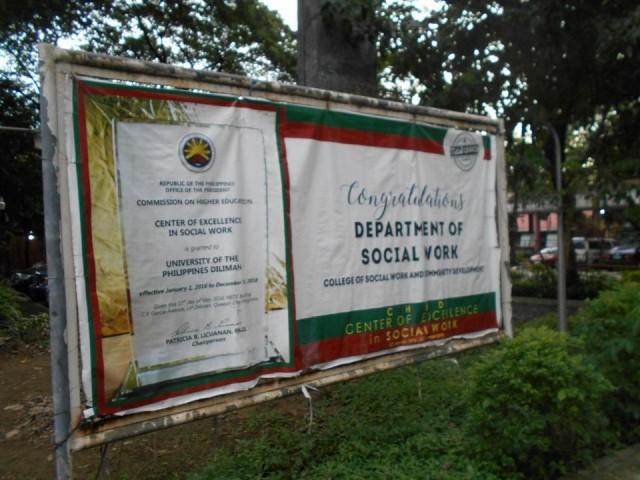103K apply to take UPCAT; actual test-takers may be fewer than 88,500
With Grade 12 of senior high school now in place nationwide, the University of the Philippines received over 103,000 applications to take its UP College Admission test (UPCAT), its admissions director said on Friday.
However, the actual number of examinees may not be more than the 88,500 aspirants UP had back in 2015 when high school was only up to Grade 10 in most schools, Aurora Odette C. Mendoza said in an interview with GMA Kapuso Foundation.
She said the 103,000 total is simply the recorded applications and that number would go down to exclude those who do not meet the qualifications,as well as those who are unable to take the test or do not take the test.

Going by the 2015 data, UP foresees about 51,000 examinees from private high schools going to UP campuses and regional testing centers for the UPCAT this weekend. About 30,000 will come from public high schools. The remainder would be from other types of high schools, such as schools specializing in science and the arts, and children who are home-schooled.
Free tuition, online portal
Mendoza cited the UP new online application system and the free college tuition program of the national government as two of three reasons for the surge in UPCAT applications.
The admissions office had been pilot-testing the online application system since after the 2015 UPCAT and that was partly in preparation for the expected deluge this year.
The third reason, according to Mendoza, is that apparently some students are “misinformed” that completion of Grade 10 is enough for them to qualify to take the UPCAT.
Regional and Middle East testing centers
“We lost a lot from Mindanao,” Mendoza said, referring to the impact of the Marawi situation.
There would have been 95 regional testing centers, but there are 84 this year because of the Battle of Marawi and bad weather in some areas.
Others may not be able to take the UPCAT this weekend because some testing centers may be affected by floods or other natural calamity.
Mendoza said there is only one UPCAT weekend every school year and it is not rescheduled. There has not been a rescheduling of the test in the past 15 years.
Only the 600 examinees in a handful of testing centers in the Middle East will be taking the UPCAT at a later date. That exam for dependents of Overseas Filipino workers is in November.
UPCAT results not the only admission factor
Mendoza said the UP admissions office posted an online reviewer to help aspirants prepare for the UPCAT.
Acceptance into UP does not solely depend on the test results, which will account for only 60 percent, because 40 percent will depend on the performance of the aspirant in three years of high school.
Mendoza, a psychologist, said those high school grades will show if the student has the persistence and commitment needed.
She added that there have been years when 10 or 15 percent were no-shows even after they were informed they were accepted into UP.
All UP courses are quota courses
UP's colleges usually have a total of about 14,000 to 15,000 slots for new freshmen. With too few slots sought by thousands more, all courses in UP are quota courses, Mendoza explained.
The number of slots per college depends on how many students each college can adequately handle without sacrificing quality of instruction, the admissions director said.
At the UP College of Social Work and Community Development, the current freshmen intake is 25 for the social work department and another 25 for the community development department, according to Professor Yolanda Ealdama.
But for the next academic year, the quota for social work freshies will rise to 50 because, Ealdama said, they want to meet the minimum level of 50 successful examinees the Professional Regulation Commission set to be recognized as among the top performing schools.

“Our passing rate is 100 percent. We are confident we can maintain that passing performance even if we increase our quota to 50 students,” the UP social work department chair said.
The PRC said last July that 3,951 out of 5,997 passed the Social Worker Licensure Examination given by the Board for Social Workers in the cities of Manila, Baguio, Cagayan de Oro, Cebu, Davao, Iloilo, Legazpi, Lucena, Pagadian, Tacloban, Tuguegarao and Zamboanga.
Ealdama said workplace demand is high for social workers because they are needed in hospitals, family courts, orphanages, homes for the aged, humanitarian organizations, foundations, government agencies, and policy bodies.
She also said there is a growing need for personnel trained in professional social work at the Philippine National Police and in the Armed Forces of the Philippines: for the PNP's women and children’s desks and to address needs of soldiers wounded in action, respectively.
Professional social work is the academic and knowledge-based “discipline of helping people help themselves,” Ealdama said.
Licensed social work, she added, goes beyond charitable acts because it involves a higher level of competencies to do “planned intervention” to address needs of the “person in the environment.”
UP CSWCD plans to conduct career talks, especially in senior high schools, generate greater public awareness of social work as career option for the young, the millennials who feel the call to the helping profession. — BM, GMA News



